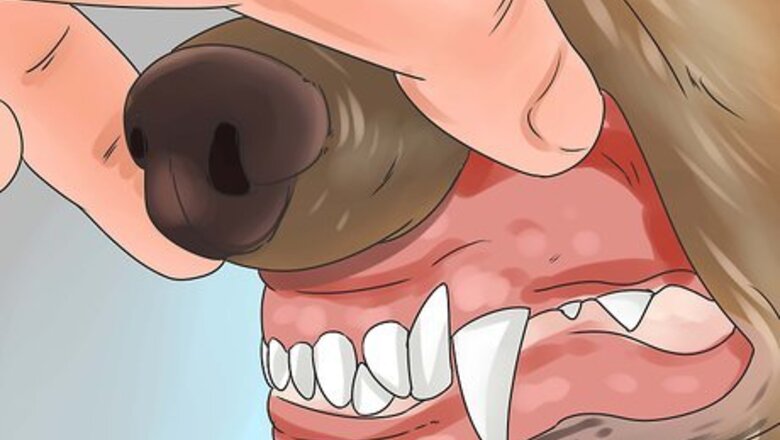
views
Examining Your Dog’s Body
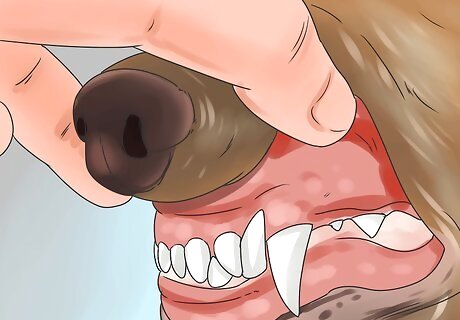
Look in your dog’s mouth. Your dog’s gums and tongue should be pale to medium pink. If your dog naturally has black gums, look at its tongue. If the gums or tongue are blue, purple, white, brick colored or extremely bright red, seek veterinary medical attention immediately. This means that something is impeding the flow of blood throughout your dog's body. You can also do a "capillary refill time" test to determine if a poison is impeding your dog's blood circulation. Lift the upper lip and press above a canine tooth with your thumb. Release your thumb then watch for a color change where you pressed. The gum color should change from white to pink within two seconds If there is significant delay (more than three seconds), check with your veterinarian.

Take your dog’s pulse. If a dog’s heart rate is over 180 beats per minute, and you have any reason to suspect poisoning, seek immediate medical attention. A normal resting adult dog’s heart rate is between 70 and 140 beats per minute. Larger dogs are typically at the lower end of the scale. You can check your dog’s heart rate by placing your hand on the left side of its chest, behind its elbow, and then feeling for the heart beat. Count how many heart beats you feel in 15 seconds and multiply that number by four to get the beats per minute. If you have enough foresight, write down your dog’s normal pulse rate in a dog journal for future reference. Some dog's heartbeats beat faster by nature.
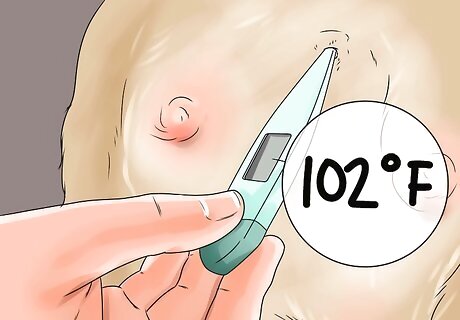
Take your dog's temperature with a thermometer. The normal temperature range of a dog is between 100 and 102.5 degrees Fahrenheit (38.3 to 39.2 Celsius). A fever does not necessarily indicate that your dog has been poisoned, but it does point to some general infirmity. If your pet is stressed or excited, you may get a falsely elevated temperature. If your pet is acting lethargic and ill and has an elevated temperature, contact your veterinarian immediately. Ask a partner to help take your dog's temperature. One person should hold the dog's head while the other inserts the thermometer into the dog’s rectum, which is found directly under the tail. Lubricate the thermometer end with petroleum jelly or water based lubricant like K-Y. Use a digital thermometer.
Identifying Strange Behavior
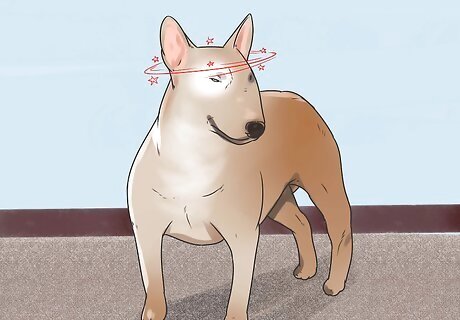
Examine your dog's balance. If your dog is staggering, disoriented, or dizzy, it could be suffering from neurological or heart problems, as well as low blood sugar caused by poisoning. Again, seek veterinary medical attention immediately.
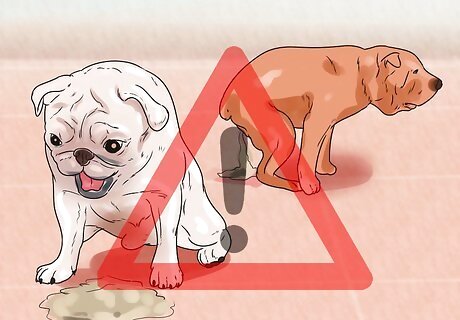
Watch for vomiting and diarrhea. Both are highly irregular in dogs. They are signs of your dog’s body attempting to expel foreign poisonous substances. Examine your dog’s vomit/stool for content, color, and consistency. Your dog’s stool should be firm and brown. If your dog’s stool becomes watery, loose, yellow, green, or deep black, contact your vet.
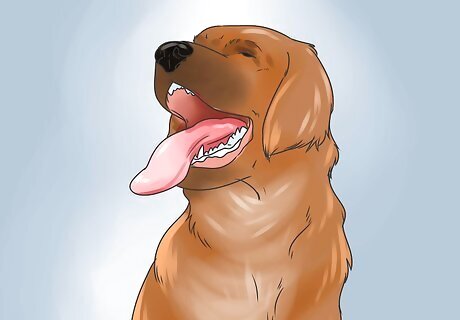
Pay attention to your dog’s breathing. Panting is normal for dogs most of the time. It is their way of expelling heat. Heavy panting lasting for longer than 30 minutes may be a sign of respiratory or cardiac difficulty. If you can hear wheezing or crackles as your dog breathes, seek immediate veterinary medical attention.If your dog ingested something, it could be affecting its lungs. You can determine your dog’s respiratory rate by watching the dog’s chest and counting how many breaths they take in 15 seconds and multiply by 4 to get the breaths per minute. The appropriate respiratory rate of a dog is 10-30 breaths per minute.

Watch for signs of sudden appetite loss. If your dog stops eating suddenly, it could be a sign of toxic substance ingestion. Call your vet if your dog displays a lack of appetite for more than 24 hours.
Calling for Help

Write down your dog's symptoms in detail. Note when the symptoms started and any actions you are taking to alleviate them. The more information you can include the easier it will be for the professional to assist you. Do not give your dog any liquids after ingesting a poisonous substance. Doing so, may help disseminate the poison throughout the body faster.
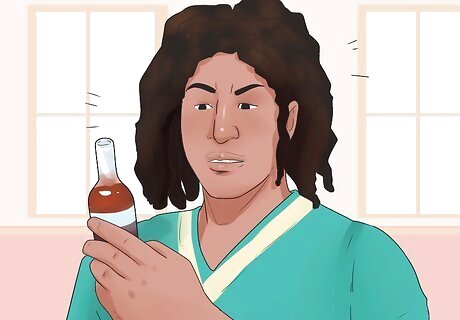
Identify the source. Walk around your house and yard to check for potential dog poisons such as rodent bait, anti-freeze, mushrooms, or fertilizers. Keep an eye out for upturned boxes, damaged prescription bottles, spilled liquids, or disturbed household chemicals. If you suspect your dog ingested a poisonous product, check the back label of the packaging for warning disclaimers. Most products with toxic ingredients will list a company telephone number that customers can call for advice. Here is a list of commonly ingested poisonous substances: Wild mushrooms (need to check individually in a reference text) Moldy walnuts Oleander Lilies/bulbs Dieffenbachia Foxglove Household cleaning products Snail Bait (metaldehyde based) Pesticides Herbicides Some fertilizers Chocolate (particularly dark or baker’s chocolate) Xylitol (sugarless gum) Macadamia nuts Onions Grapes/raisins Yeast dough Alcohol

Call a poison hotline or a vet. Poison hotlines are not just for people. Because poisons have similar effects on people and dogs, their representatives will be able to advise you. Call your veterinarian. Describe the symptoms and possible causes of the accidental poisoning. Discuss any concerns you may have regarding the poisoning. Ask if the symptoms warrant an immediate visit to the clinic. Do not induce vomiting unless instructed. In general, after 2 hours, the substance is already out of the stomach. Also, if your pet is having trouble breathing, is staggering, or is partially conscious, do not induce vomiting because they might choke on their own vomit. EXPERT TIP Colleen Demling-Riley, CPDT-KA, CBCC-KA, CDBC Colleen Demling-Riley, CPDT-KA, CBCC-KA, CDBC Canine Behavior Consultant Colleen Demling-Riley (CPDT-KA, CBCC-KA, CDBC) is a Canine Behavior Consultant and the Founder of Pawtopia Dog Training. With more than 20 years of experience, she specializes in creating and customizing dog management programs for dog owners. She is a Certified Pet Dog Trainer-Knowledge Assessed, Certified Behavior Consultant Canine-Knowledge Assessed, Certified Dog Behavior Consultant, and American Kennel Club Canine Good Citizen Evaluator. Colleen is a member of the International Association of Canine Professionals and has been a featured expert in national media including the New York Times, Woman’s Day, Readers Digest, Cosmopolitan, and Yahoo.com. Colleen Demling-Riley, CPDT-KA, CBCC-KA, CDBC Colleen Demling-Riley, CPDT-KA, CBCC-KA, CDBC Canine Behavior Consultant Call the vet for guidance if your dog is in pain. Make your dog comfortable while you attempt to locate the source of their pain. Put them on a soft bed or blankets in a safe and cozy place where they can rest. I recommend choosing a less-busy area of the house, like a crate or bed in the corner of the family room. Don't hesitate to call your vet immediately to find out what you should do.
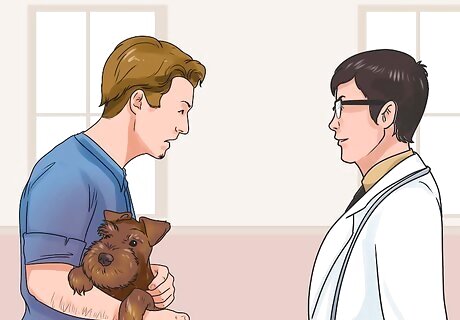
Take your dog to a clinic. Time is of the essence when treating accidental dog poisoning. If symptoms persist even after your veterinarian's initial assessment, take your dog to a clinic immediately. Locate the nearest 24-hour care facility if symptoms persist over a weekend or during nighttime hours.














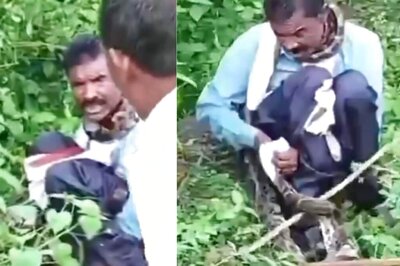





Comments
0 comment